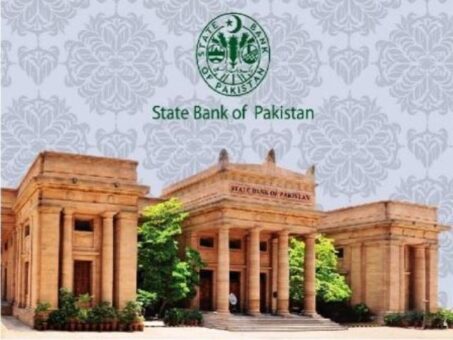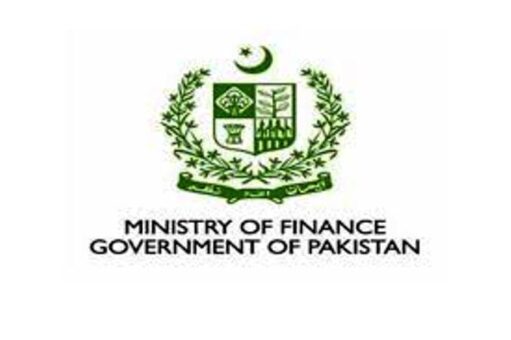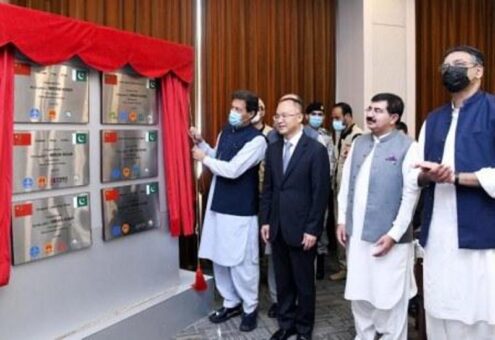GWADAR: Prime Minister Imran Khan on Monday inaugurated the first phase of Gwadar Free Zone besides performing the groundbreaking of its second phase spread over 2,200 acres and also inaugurated three factories.
Addressing the launch of development projects and the signing ceremony of Memoranda of Understanding here in the port city, the prime minister said Gwadar would open up new avenues of opportunities for regional trade.
The prime minister said the future of Pakistan belonged to Gwadar, emerging as the ‘focal point of development’ and ensuring prosperity for the entire country.
Imran Khan mentioned the recently announced Rs 730 billion development budget for Balochistan by the federal government and said it was “historic”, and was aimed at uplift of the province and at mitigating the longstanding deprivation of its people.
“No country can progress unless it mainstreams all its areas and ensure development across the board,” he said, adding that connectivity was one of the major components of the Balochistan package.
The prime minister who arrived in Gwadar on a day-long visit inaugurated the first phase of Gwadar Free Zone besides performing the groundbreaking of its second phase spread over 2,200 acres also inaugurated three factories.
The prime minister said his vision of an emerging Pakistan was a steadfast nation that was committed to the prosperity of the country.
He said the government was focused on ensuring the provision of basic amenities in Gwadar and Balochistan, particularly clean water and electricity to encourage industrialization.
Imran Khan said the government was prioritizing development in far-flung areas of Balochistan, northern areas and rural Punjab.
The prime minister mentioned that Gwadar International Airport would encourage regional trade and boost economic activity.
He said a one-window operation was in progress to facilitate the investors and urged upon the provincial governments to ensure proper servicing of investors since the subject moved to them after the passage of the 18th Amendment.
Imran Khan thanked the government of China for the launch of water and solar projects in Balochistan, particularly in Gwadar.
“Pakistan can benefit from its strategic location and also from the expertise of its friend China, which is an economic power in the region,” he said.
He also mentioned the technical education provided by China to the youth of Gwadar, which he said, would prove greatly helpful as the foreign investment grew in future.
The prime minister mentioned several initiatives for the uplift of Gwadar including the university, employment under the Kamyab Jawan Programme, and the up-gradation of the equipment of local fishermen to ensure value addition of their catch.
He said the Prime Minister Office would regularly monitor the progress on the development plans initiated in Gwadar on a monthly basis.
The prime minister said regional countries had expressed interest in reaping the benefits offered by the Gwadar port.
In this scenario, he expressed concern over the deteriorating law and situation in Afghanistan, stressing peace and stability was extremely important for the continuity of development.
Chief Minister Balochistan Jam Kamal Khan said the provincial government had been collaborating with the CPEC Authority to resolve the issues of customs. He drew attention to the problem regarding the relocation of locals along Eastbay and mentioned that efforts were on for an amicable solution.
He said the Public Sector Development Programme for the current fiscal year covered the entire Balochistan and mentioned that the extension of Gwadar Hospital up to 200 beds, construction of the first university in Gwadar, border markets and uplift of villages were on the cards.
Chinese Ambassador Nong Rong said the cooperation between the governments of Pakistan and China had led several projects to see the light of the day. He said over the past eight years, the two countries accelerated their pace on several projects related to civic amenities, particularly clean water and solar plants.
He said Gwadar was a showcase of the “Chinese solution” for Pakistan’s development.
By taking a comprehensive way of development, he said, Gwadar Port would turn into a business hub. He said China would continue to extend support for a shared future with Pakistan.
Chairman CPEC Authority Lt Gen (retd) Asim Saleem Bajwa said the Gwadar Free Zone spread over 60 acres had been completed and 46 enterprises had become operational.
He said now, the groundbreaking of the second phase at the vast 2200 acres starting today would usher in a new era of prosperity in Gwadar and in Balochistan.
He mentioned that the personal interest of Prime Minister Imran Khan resulted in materialization of trans-shipment policy, Afghan transit policy, the framework signing and execution of border trade with Iran and the start of work at Eastbay Expressway.
He said several significant development projects were in progress including the Gwadar International Airport and a Vocational Institute to develop skills of the locals.
Bajwa said conspiracies were on the rise against CPEC, however, the commitment of the government greatly helped thwart such challenges.
Chairman Senate Sadiq Sanjrani, Foreign Minister Shah Mahmood Qureshi, Information Minister Chaudhry Fawad Hussain, Planning Minister Asad Umer, Minister for Defence Production Zubaida Jalal and Minister for Maritime Affairs Ali Zaidi were present.
Earlier, the prime minister before landing at the Gwadar Airport took an aerial view of the infrastructure built at the seaport including the Expressway.
On his arrival at the China Business Centre Hall, he was given a detailed briefing of the South Balochistan Development Package. He also held an interaction with the CPEC Workforce.
Chairman CPEC Authority and Chinese Ambassador ink Memoranda of Understanding for cooperation on development in Gwadar.
Moreover, seven regional countries including Saudi Arabia, United Arab Emirates, Kuwait, Oman, Egypt, Kenya and Qatar on Monday expressed their commitment for cooperation on the development of Gwadar.
With their respective ambassadors present at the ceremony attended by Prime Minister Imran Khan, the regional countries expressed their support for the development of Pakistan’s port city.
Prime Minister Imran Khan on the occasion also witnessed the signing of two Memoranda of Understanding with the government of China for carrying out development projects in Gwadar.
The accords included the implementation agreement on setting up of 1.2 MGD desalination plant to resolve the shortage of drinking water for the residents of Gwadar.
Other agreements included China’s grant for solar generators for South Balochistan, and the groundbreaking of North Gwadar Free Zone and Enterprises.
Also on the occasion, the Chinese investors through video-link from Shanghai showed the ‘Expression of Commitment for Investment’. Those who pledged to invest in Balochistan’s different sectors included Huang Weiguo (textile), Huang Daoyuan (prefabricated technology), Fang Hongyan (agriculture), Shen Jian (wool spinning), David Dia and Chen Yi (dairy processing) and Bao Dequan (textile).
The factories inaugurated on the occasion included the chemical fertilizer factory, Gwadar Animal Vaccination factory and lubricant factory, besides the opening of Gwadar Fertilizer Plant, Gwadar Animal Vaccine Plant, Henan Agricultural Industrial Park, Hengmei Lubricants Plant, Gwadar Free Zone Phase-2, and Gwadar Expo Centre.
(Courtesy: Associated Press of Pakistan)








